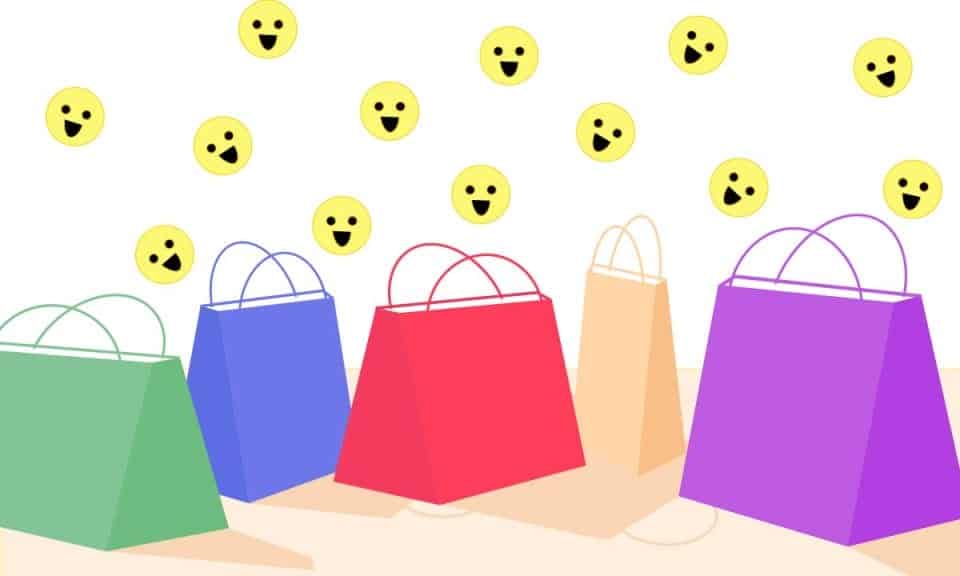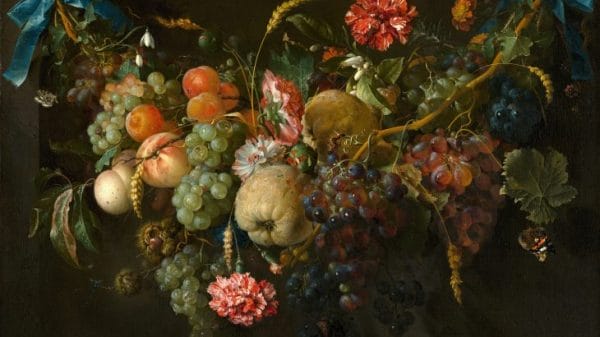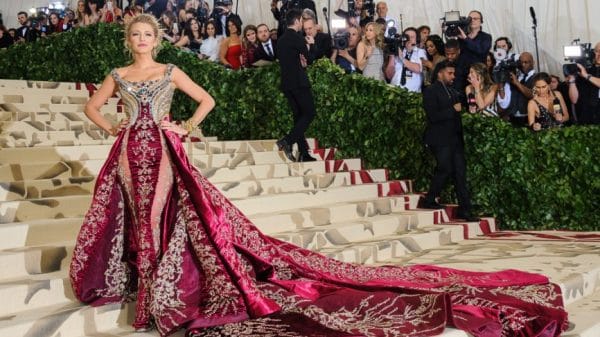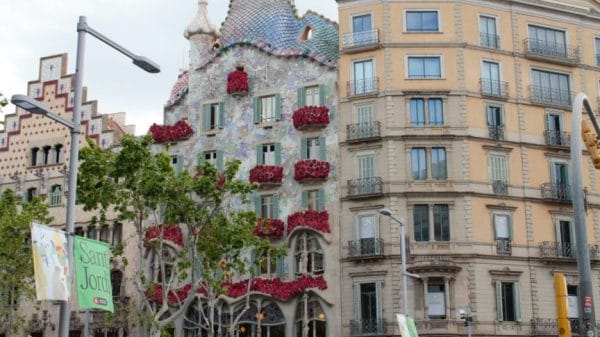Sometimes, when you’re having a rough patch, all you want is a bit of retail therapy.
We’ve all been there. Sometimes, a sweet drink or a new top helps keep your mind off the pain of existence.
But, as with anything, moderation is key. So what happens when consumption becomes a lifestyle?
“Retail Therapy”
Simply put, retail therapy is shopping to lift your mood.
Some people like it much better than actual therapy, and to be fair, it’s not hard to see why. At a surface level, the gratification is much more instant than regular therapy, with the tangible prize of a new shiny object.
A video by TikTok user Camryn Faulkner flashes footage of a mall, showing off a Louis Vuitton wallet surrounded by Starbucks, shelves of makeup and black and white Sephora bags, Golden Goose sneakers, flowers and bulbous ceramic decor. The words “retail therapy >>>>>” accent the montage, completing the classic style of other aesthetic videos. The video currently boasts almost 300 thousand likes and over 1800 comments.
One user commented, “Bro, this is my favorite thing to do, but I’m broke now cus I spent all my money on doing this.”
A 2023 Forbes article cites research by professional services network and accounting firm Deloitte. Out of the 114,000 adults surveyed across 23 countries, “nearly 80% said they made at least one splurge purchase to lift their mood in the past month despite only 42% saying they could afford to make such indulgent purchases.”
As with all overconsumption, retail therapy can be unsustainable not only for your wallet but for the planet. Amazon, Shein, and other fast-fashion companies seduce consumers with low prices on items they don’t need that they will no longer want in a month, and that may fall apart even before then (they’re cheap for a reason).
Despite this, social media seems to see no problem.
Shopping Hauls and Trend of the Week
On TikTok, you won’t be hard-pressed to find videos of influencers showing off their hauls. Dumping out the contents of vibrant bags with just about anything, from cheap Shein and thrift store finds to high-end athleisure from Lululemon. Users have even started making specifically “retail therapy hauls.”
A recent trending product that has been making the rounds seems rather mundane: water bottles—specifically, Stanley brand cups. You’ve surely seen or heard of people flocking to Targets (or lining up in queues outside the doors), or TikToks of influencers showing off their cabinets filled with rows upon rows of Stanley cups in every color—one for every outfit.
Some might call videos like these excessive. And indeed, plenty of people do. Especially in this latest trend wave of Stanley cups, commenters often point out how no one needs 20 reusable bottles or makes parody videos mocking the product and/or trend. But with videos garnering hundreds of thousands of views—some even breaking into the millions—there’s clearly a high demand.
Many have also pointed out that the trend is simply a repeat of the past popularity of Hydroflasks. So, why are we still obsessed with something as simple as a water bottle?
A Community of Consumers
Part of the power of retail therapy is that, for many people, shopping is a communal activity.
Comments on videos like Camryn Faulkner’s are flooded with users tagging their friends, saying things along the lines of “this is so us” or “we’re due for a shopping trip.” Shopping is a reason to hang out with friends.
Marketing and sales thrive on our need for connection. One of the most viral Stanley Cup videos features the $45 red and pink “Galentine-themed” Stanley cups stocked on Target shelves.
“Surprise your best friend with a Quencher for her desk or unveil the gift on your girls’ getaway,” the product description on Target’s website optimistically reads. “Show your inner circle the love they deserve with Stanley’s exclusive Galentine’s Collection.”
But beyond friendships, it’s FOMO, a key point of marketing schemes since the beginning of time. A Stanley cup becomes a symbol, a means of being one of the “cool” people, one of those “healthy” people who always stay hydrated, regardless of whether you actually finish all 40 ounces.
A fixation on appearance goes into all trends. In an article from last December, we discussed how many BookTok accounts “have romanticized” reading, based not so much on the act but “the aesthetic of reading.” The same is true of Stanley cups: they symbolize the “aesthetic” of fitness and hydration, the “aesthetic” of being “that girl” (or anyone else) who goes to the gym every week and has clear skin and their life together.
“People are more likely to try something new if it looks nice,” Panayi says.
The same principle applies to Stanley cups, with the pretty colors, neat lines on shelves, and the neon-colored cotton candy-flavored waters that “WaterTok” influencers fill them up with.
For lonely consumers, romanticism sells.
The Epidemic of Loneliness
For many people, the COVID-19 pandemic came with increased loneliness.
Young people have been one of the groups most affected. According to a 2021 study by Morning Consult, commissioned by healthcare company Cigna, about 79% of U.S. young adults reported feeling lonely, and about 42% of adults aged 18-34 reported “always” feeling “left out.”
According to an analysis of data from the Office of National Statistics by the UK-based Campaign to End Loneliness, pre-pandemic loneliness was reported in 5% of people, rising to 7.2% between October 2020 and February 2021. It remained around that level through December 2022. From November 2022 to February 2023, people ages 16-29 reported feeling lonely often at a higher rate, about 9.7%.
Social Media: For Better, For Worse
One way many people stayed connected through isolation was with social media; because of that, it seemed that social media wasn’t that bad. And that’s fair: at a time when everyone–including young people during their social development—could not meet with their friends and family in person, social media provided a gateway to stay in to commiserate with each other.
But while the pandemic isolations contributed to this problem, it did not invent it. A study published in the Journal of Adolescence in 2021 found an increase in loneliness between 2012-2018 among students aged 15-16.
In an article by Wired, USC quantitative social scientist Marlon Twyman II claims that social media is driven by faux social interaction.
“Because many of our interactions are now occurring in platforms designed to promote transactional interactions,” Twyman said, “many people do not have much experience or practice interacting with people in settings where there are collective communal goals for a larger group.”
As much as social media can help us stay connected, it is also a place of meticulously curated, picture-perfect content designed to generate FOMO. Brands capitalize on this, running marketing campaigns and sponsoring influencers to promote their product to their thousands of followers who can only dream of having a life like theirs.
Even pre-pandemic, adolescence has been a time when young people want to find an identity for themselves and a group to associate with. When it comes to wanting to “fit in,” a cute water bottle can become the Holy Grail.
Happiness is the Price of a Hot Pink Stanley
It’s understandable that retail therapy has been such a hit. Young people especially may be unable to go to real therapy due to finances or parental restrictions. So, retail therapy can seem like the most viable option.
You get a nice item for yourself, quench your FOMO, and it’s (maybe) cheaper than actual therapy? It’s definitely tempting. And when friendships feel hollow, and the future looks bleak, you might as well spend your paycheck on something that might give you that brief burst of happiness.
Life gets hard, and there’s no shame in sometimes opting for an easy distraction so you don’t go insane.
But in a world where everything revolves around money, we should ask why so much of our happiness involves spending. We should notice how that desire is weaponized by brands bombarding your For You page with cool new things that you absolutely must get. (Don’t look at the price, the cheap quality, or the inhumane practices of the company taking your money).
Retail therapy is a symptom as much as it’s a remedy, a short-term solution born of a long-term problem. If we must consume to be consoled and form communities, what’s left that doesn’t have a price?
Even if a Stanley Cup is inflammable, that doesn’t mean you shouldn’t put out the fire.












